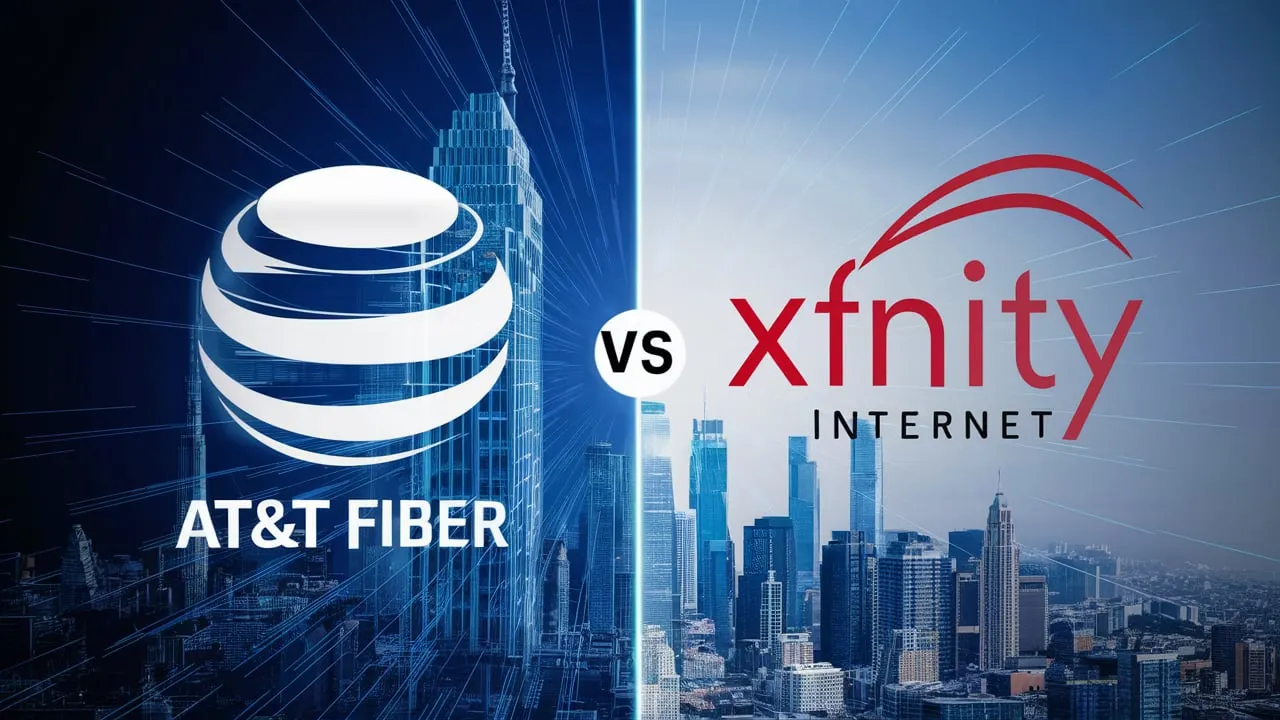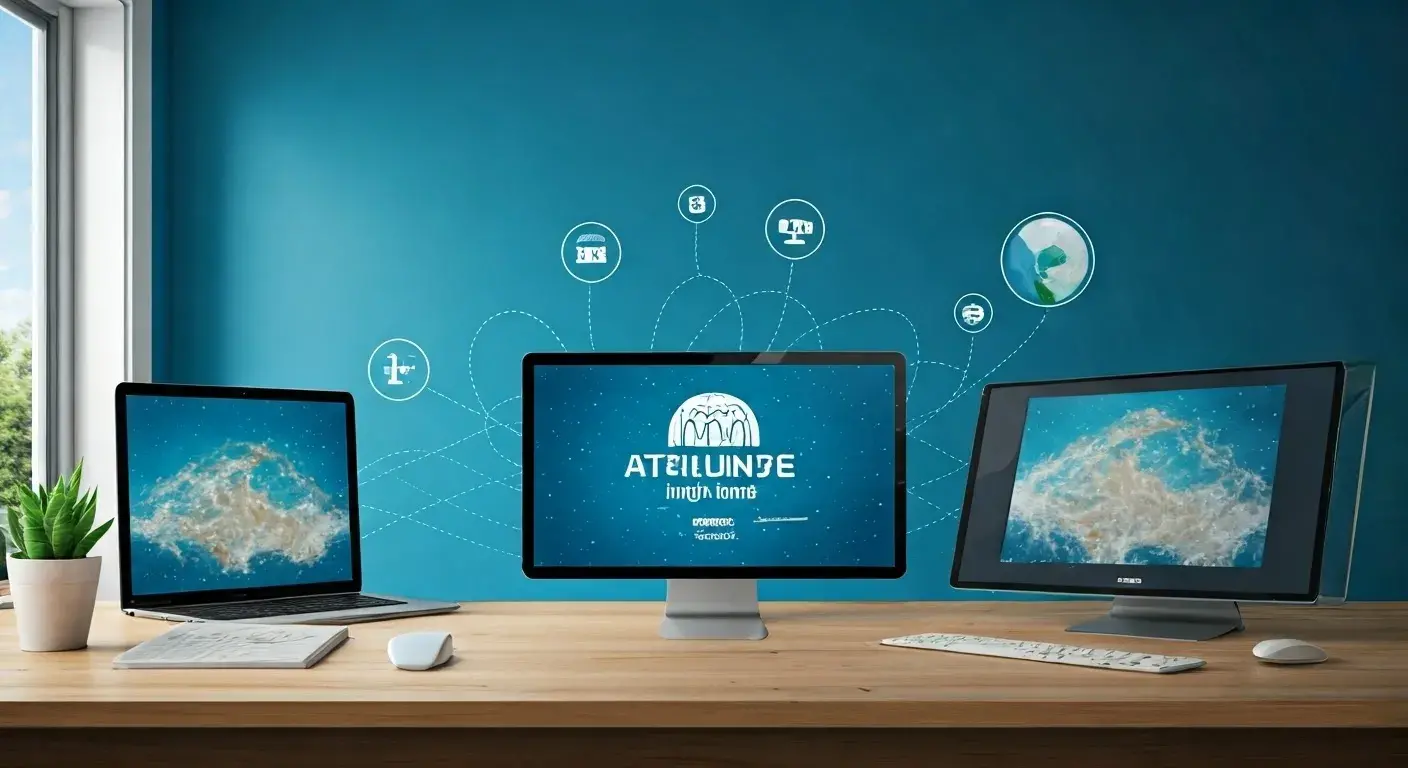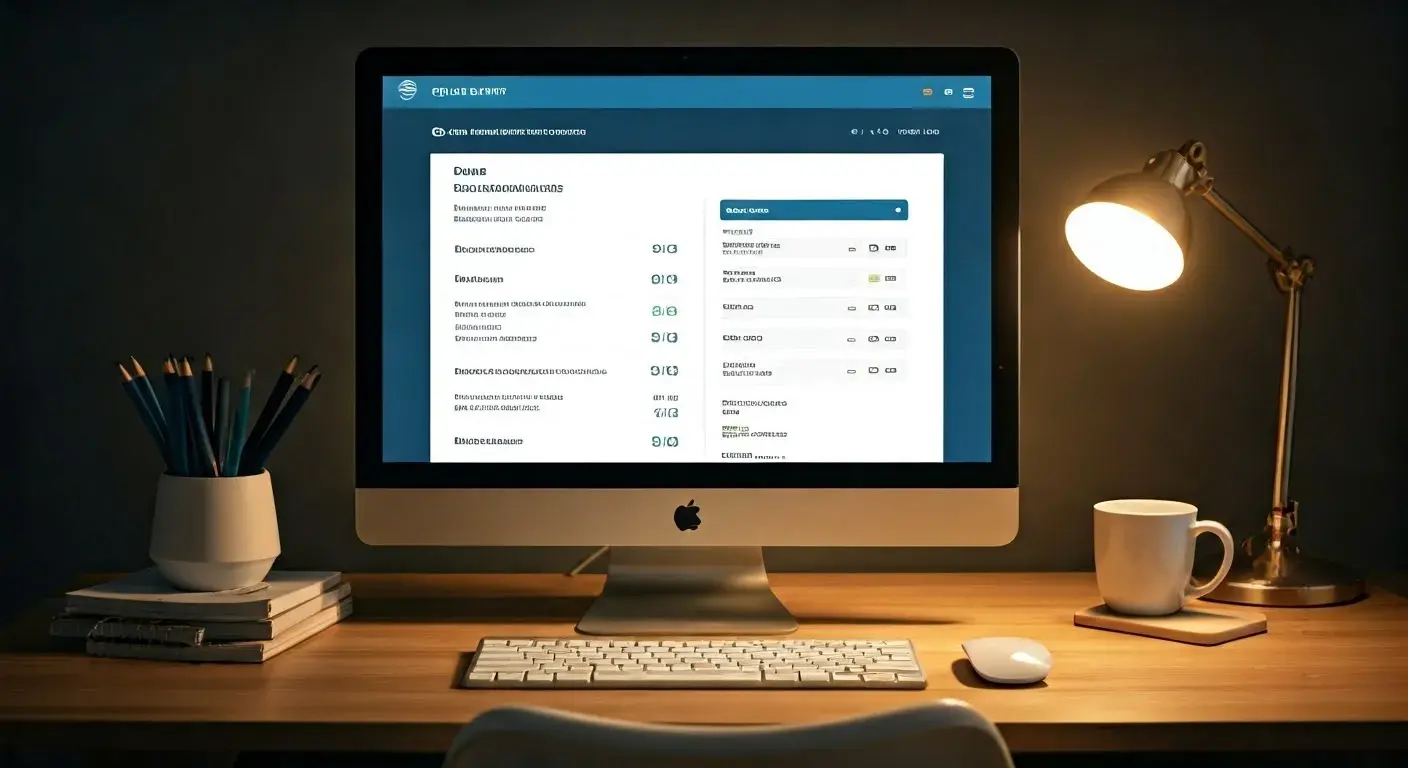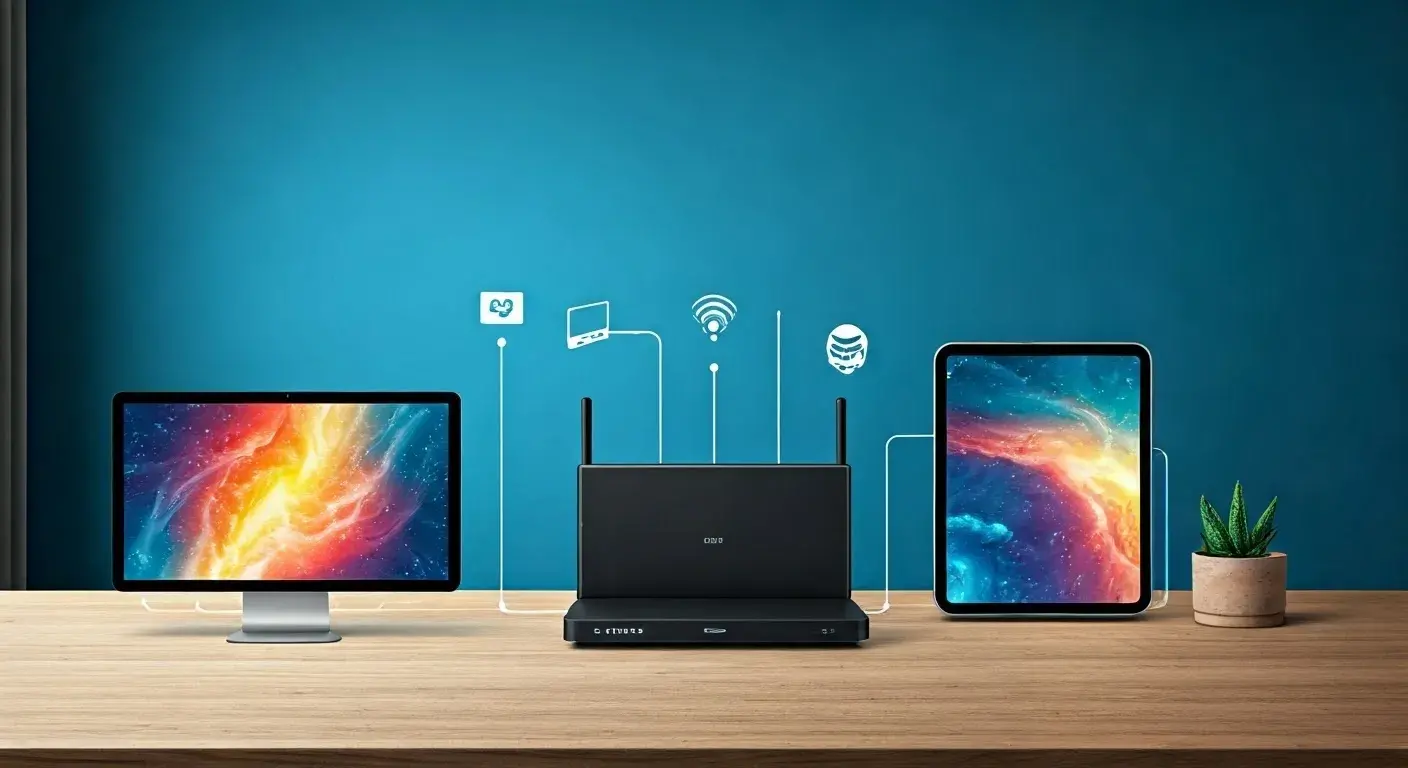AT&T Fiber vs Xfinity Internet: Making the Right Choice for You

In today's world, you need good and fast internet. It is not just a nice thing to have anymore; it's essential. When looking for an internet service provider, AT&T Fiber and Xfinity are two names that come up often. They both provide many internet plans for different needs and budgets. They offer fiber internet and other options too. This detailed look at AT&T Fiber and Xfinity will check their speeds, pricing, customer service, and other important things. This can help you choose the best option for your home internet needs.
Comparing AT&T Fiber and Xfinity: An Overview
AT&T and Xfinity are strong competitors in the internet service market. Both have a wide range of coverage areas and different plans. They use different technologies and have their strengths and weaknesses.
AT&T has invested heavily in fiber optic infrastructure. This has made AT&T Fiber a great option for those who want fast and reliable internet.
On the other hand, Xfinity mainly uses a strong cable network. This gives them wide coverage and good speeds. Xfinity also provides fiber internet in some areas and is slowly expanding this service.
Choosing the best provider often depends on where you live and what your internet needs are.
The Evolution of Internet Services in the US
The internet service in the US has changed a lot over the years. At first, people used dial-up internet. This method used phone lines. It was known for being very slow and causing phone calls to drop. Then came cable internet. It used the same lines as cable TV and gave people much faster and more reliable internet. Many homes chose this option.
As people wanted faster speeds and better access to things like video streaming and online gaming, fiber optic internet became popular. This type of internet uses light traveling through thin glass fibers. It offers much faster download speeds and upload speeds than cable internet.
Today, cable internet is still common because it is easy to find. But more fiber networks are being built quickly. Companies like AT&T and Xfinity are investing a lot in fiber internet services. They want to give customers amazing speed and a better online experience.
Key Factors to Consider in Internet Service Providers
When you look at internet plans from different providers, you should pay attention to more than just the price. Download speeds are important because they show how fast you can access and enjoy content online. Upload speeds matter too because they impact how well you can share files or join video calls. Think about how your household uses the internet and choose plans that have enough speed for everyone.
You should also consider if there is a data cap, which is a limit on how much data you can use each month. Some providers offer unlimited data, but others have limits and will charge extra if you go over. Pay attention to how much data your household uses, especially if you watch a lot of high-definition videos or download big files often.
Finally, don’t overlook customer service. A good internet provider should have helpful support to solve technical issues or help with billing. Look for providers that have positive customer reviews and a good track record for dealing with problems quickly and efficiently.
Analyzing Speeds and Performance
Speed is very important for internet service. It affects how good your online experience is. AT&T Fiber offers great speeds because of its fiber optic network. It has symmetrical speeds, which means you get the same fast speeds for downloading and uploading. This is great for things like video calls or quickly sending large files.
Xfinity has a cable internet system that typically offers fast download speeds. However, its upload speeds are usually slower. If you choose Xfinity's fiber internet plans, when they are available, you can get similar download and upload speeds as AT&T Fiber. In the end, the speed you get will depend on your internet plan and the technology offered at your address.
AT&T Fiber Speeds: What to Expect
AT&T Fiber is known for its focus on fiber internet technology. It offers impressive speeds, with some plans reaching up to 5 Gbps in certain areas. This means AT&T brings some of the fastest internet speeds in the market. A major benefit of AT&T Fiber is its symmetrical speeds. This means users get the same speed for downloading and uploading.
Symmetrical speeds are a big plus for fiber internet and make the online experience much better. Unlike cable internet, which usually has slower upload speeds, AT&T Fiber allows for smooth uploads, live streaming, and video calls without any interruptions.
If you want faster speeds and a better online experience, especially for high-demand activities, AT&T Fiber is a great choice. Whether you are downloading big files, streaming 4K videos, or playing online games, AT&T Fiber’s quick speeds provide a smooth and lag-free experience for users who need good internet.
Xfinity Internet Speeds: A Closer Look
Xfinity is well-known for its big cable internet network. It offers many speed options to meet the different needs of users. The speed choices and availability can change depending on where you live. In general, Xfinity has good download speeds that let users browse, stream, and games without trouble.
But, it is important to remember that Xfinity mostly uses cable internet. This often means that upload speeds are lower than download speeds. You might notice this gap when doing things that need a lot of uploading, like video calls, online gaming, or sharing large files.
For those who want faster upload speeds, Xfinity has fiber internet plans in some areas. These plans offer equal download and upload speeds, which are similar to AT&T Fiber. Fiber internet plans use advanced fiber optic technology to give a very fast and reliable internet experience.
Make sure to look up the specific internet plans at your address. Know the download and upload speeds connected with each plan. Thinking about how your household uses the internet will help you choose the best Xfinity internet plan for your needs.
Plans, Pricing, and Value for Money
Choosing an internet plan is important. You need to look at pricing, speeds, and extra features to see if they give you good value. AT&T Fiber and Xfinity have different pricing methods. They often bundle internet services with things like TV, phone, and wireless plans. This can help you save money. Their starter prices may look good, but remember that prices can go up after the initial deals end.
There are other things to think about too. Data caps, fees for equipment rental, installation costs, and possible contracts can affect how much you pay in the long run. It's important to read the details and know the total cost of owning each internet plan from each provider. Look at what your home needs for internet, check the choices you have, and pick a plan that fits your budget and your online experience.
Breaking Down AT&T Fiber Plans
AT&T Fiber has different fiber plans. They usually start with download speeds of 300 Mbps and can go up to multi-gigabit speeds, depending on where you live. Their pricing is clear, often without contracts or data limits. This makes them a good choice for people who use a lot of internet and want to avoid extra charges or early termination fees. However, keep in mind that prices may go up after the first promotion period, which lasts between 12 to 24 months.
AT&T offers many promotions. These can include discounts for signing up online, choosing paperless billing, or bundling your internet with other AT&T services like wireless plans or DirecTV. Bundling can help you save money and make your billing simpler by keeping everything with one provider.
Before you choose a plan, it is important to read the fine print. Look out for taxes and fees. Also, check for equipment rental costs, installation charges, and any future price increases. These details are key to understanding if AT&T Fiber plans are affordable for you in the long run.
Understanding Xfinity's Pricing Strategy
Xfinity has different internet plans to fit various budgets and needs. They often offer low introductory prices, making them a good choice for those looking for cheap internet. However, keep in mind that these low rates usually only last for a year or two before prices go up. It's important to think about these price increases when deciding on a plan for a long time.
Xfinity often has bundle packages that join internet service with TV, phone, and home security. Bundling can save you money and make paying bills easier, as it can sometimes be cheaper than getting services separately. They also offer benefits like paying for early termination fees from your old provider to help you switch to them.
Like many internet service providers, Xfinity gives discounts if you sign up for autopay and want paperless bills. While the monthly savings might seem small, they can add up over time. Consider the benefits and drawbacks of bundle packages, their promotional pricing, and possible price hikes. This way, you can make a good decision that fits your budget and internet needs.
Availability Across the United States
The availability of AT&T Fiber and Xfinity internet services is quite different across the US. Both companies have large coverage areas, but their services and speeds depend on the technology used in each place. AT&T is quickly growing its fiber optic network, offering AT&T Fiber in many city and suburban areas.
Still, their DSL and fixed wireless options are common in places where fiber hasn't reached yet. On the other hand, Xfinity's cable internet covers a big part of the country. However, their fiber internet is only available in certain areas. It is important to understand what options you have in your area when deciding between these providers.
Where Can You Get AT&T Fiber?
AT&T provides fiber internet service in certain parts of the US. They want to grow their fiber internet reach. Their national coverage mainly uses DSL and fixed wireless internet. However, AT&T Fiber is becoming more common in cities and suburbs where upgrades are happening. If you want to check if AT&T Fiber is available in your area, go to the AT&T website and enter your address for a current status.
The areas that AT&T covers with fiber internet are always growing. This is due to their investment in fiber optic technology. Their goal is to offer high-speed internet. This includes equal download and upload speeds for more customers. If you're hoping for fiber internet in your neighborhood, watch for updates from AT&T about their expansion projects.
If you find that AT&T Fiber is not available where you live, you can look at other internet options from AT&T. These include DSL and Fixed Wireless, but keep in mind these services may be slower or have more data limits than fiber internet.
Xfinity's Reach and Service Areas
Xfinity provides wide coverage across the United States using its strong cable network. Their cable internet service is found in many cities and towns, reaching a large number of people. Xfinity also has Xfinity Mobile. This service uses Verizon's network to give customers phone coverage in areas where Xfinity might not reach.
However, Xfinity's fiber internet service offers much faster speeds and equal upload and download speeds, but it only covers a few areas. Some big cities like San Francisco, Chicago, and Atlanta have spots where Xfinity Fiber is available, but coverage is not everywhere even in those cities.
If you want to find out what internet services are available at your home, go to Xfinity's website and enter your address. It will show you the plans, speeds, and technologies available. This way, you'll know if you can get Xfinity Fiber or if you have to use their cable internet service.
Customer Experience and Support
Customer satisfaction is very important for an internet provider's reputation. It can change your overall experience with them. It is important to check customer service ratings, how billing is done, and how easy it is to fix technical problems before you choose a provider. AT&T usually gets better customer satisfaction scores than Xfinity. They often rank higher in surveys and studies.
Still, people's experiences can differ. It’s a good idea to read customer reviews in your area for both AT&T and Xfinity. When looking at customer experience, think about wait times for support, how helpful the representatives are, and how easy it is to sort out billing issues.
AT&T Fiber Customer Satisfaction Ratings
AT&T Fiber often rates very high in customer satisfaction. They usually do better than other companies in network reliability, customer service, and the value of their fiber internet plans. Independent studies, like the American Customer Satisfaction Index, show they aim to give a great customer experience.
Customers like AT&T Fiber's clear billing. There are no hidden fees or sudden price increases after the first promotional period. This clear pricing helps create trust and higher satisfaction among users. Still, each experience can be different. It is a good idea to look for feedback from current AT&T Fiber users in your area.
You can find helpful information about AT&T Fiber customers’ real experiences in online forums, social media groups, and neighborhood apps. This can show any differences in service quality or customer support based on location.
Xfinity Customer Service: An Assessment
Xfinity has worked hard to improve its customer service in the last few years. They are trying to fix problems like long waits, billing issues, and how helpful their support team is. Even though they have made some progress, their reputation is still behind some other companies.
One good thing is that Xfinity reaches out to customers. They often give rewards, like free premium channels or trials for streaming services like Peacock Premium. This shows they care about customer satisfaction. Also, they have made their website and mobile app easier to use. This helps customers manage their accounts, fix technical problems, and find helpful resources more easily.
Still, making customer service better takes time, and there are challenges left. To understand the quality of their support in your area, check reviews specifically from your region and ask current Xfinity customers for their thoughts.
Additional Fees, Contracts, and Fine Print
Hidden fees and contract rules can quickly make a good internet plan less appealing. Take time to read the details before you choose an internet service provider. You need to know about costs that may come up besides the monthly price shown. AT&T Fiber and Xfinity have different ways of handling contracts, equipment fees, and installation costs. This can change how much you pay.
Look for clear prices, easy-to-understand terms, and a provider that is fair in their billing. Reading customer reviews can help you understand how a provider deals with billing problems, hidden fees, and how easy it is to cancel the service if needed.
Navigating AT&T's Additional Charges
AT&T generally offers transparent pricing with their fiber internet plans, often advertised with a straightforward monthly cost and no data caps to worry about. However, it's still crucial to understand potential additional fees that might contribute to your overall bill. Installation is typically free for new customers, but it's essential to confirm if this applies to your specific plan and location.
While AT&T Fiber plans don't have contracts, their other internet options, like DSL or fixed wireless, might come with early termination fees if you cancel service before the contract period ends. Additionally, like almost all providers, AT&T has a monthly state cost recovery charge, which varies by location and contributes a few dollars to your monthly bill.
Here's a simplified table highlighting some potential additional fees:
| Fee | Description |
| Installation | Usually free for new customers, but it's essential to confirm with AT&T |
| Early Termination Fee | Applies to contracts; no early termination fees with AT&T Fiber plans but confirm the terms for DSL or fixed wireless options. |
| State Cost Recovery | A monthly charge, varying by state, typically a few dollars added to your bill |
| Equipment Rental Fee | AT&T typically includes equipment rental in the price, but confirm with your plan; using your compatible equipment might be an option. |
Always review your chosen plan's details carefully or contact AT&T directly to confirm specific costs and fees applicable to your address and service tier.
Xfinity's Fees and Contractual Obligations
Understanding Xfinity's fees and contract terms is very important. This way, you can avoid unexpected charges on your bill. Xfinity has competitive promotional pricing, but the contract lengths can vary. Some plans may require a commitment of one to two years. If you cancel the service early, you could face early termination fees. It’s important to select a plan that fits your needs.
Xfinity also charges a monthly rental fee for their xFi Gateway. This device works as both a modem and a router to provide internet access and Wi-Fi. Depending on the plan you choose, the rental fee can be between $14 and $20 each month. If you have compatible equipment, you can use it and avoid this ongoing fee.
There are also other possible additional fees to consider. Installation charges may apply, although Xfinity often has promotions for free installation. You could also face late payment fees or data overage charges if your plan does not offer unlimited data. Make sure to carefully review your chosen plan’s terms or reach out to Xfinity. This can help you understand any possible fees based on your location and type of service.
Technology and Infrastructure Comparison
The technology behind an internet service has a big effect on its speed, reliability, and ability to last. AT&T Fiber uses its growing fiber optic network. It sends data using pulses of light through thin glass fibers. This allows for very fast speeds and great reliability. On the other hand, Xfinity mainly uses its cable network. It takes advantage of the existing cable television system to provide internet services.
Cable internet can be quick and efficient, but it usually falls short compared to fiber internet. Fiber internet is faster and offers similar upload and download speeds. Xfinity is also investing in fiber optic systems. They are slowly expanding their fiber internet coverage to provide faster and better services in certain areas.
The Backbone of AT&T Fiber's Network
AT&T Fiber's strength comes from its strong fiber optic network. This network is quickly becoming the best choice for high-speed internet. Unlike regular cable internet, which uses coaxial cables to move data, AT&T Fiber uses light pulses in thin glass fibers. This means users get much faster internet speeds and better reliability.
The perks of a fiber connection go further than just speed. Fiber optic cables are less affected by electrical devices or bad weather. This results in a stable internet connection with less lag. This stability is important for things like online gaming, video calls, and streaming, where even small breaks can hurt quality.
AT&T is working hard to grow its fiber network, making fiber internet available to more homes. With more bandwidth, fiber internet can meet the growing needs of future internet usage. This makes AT&T Fiber a smart choice for anyone looking for reliable internet over time.
Inside Xfinity's Technological Edge
Xfinity stands out because of its large cable network. This network connects millions of homes and businesses across the United States. They have also begun using fiber optic technology in some areas, offering Xfinity Fiber to certain customers.
For those within the cable network area, Xfinity has the xFi Gateway. This device is a mix of a modem and a router. It comes with helpful features like parental controls, tools to manage the network, and better security. These tools help users take charge of their home network and connected devices.
Xfinity also lets customers use their compatible equipment. This means people who want different networking options or advanced features can avoid renting from Xfinity. This choice allows users to customize and control their home network setup.
Conclusion
In the world of fast internet, picking between AT&T Fiber and Xfinity is important. You need to think about several things like speed, price, customer satisfaction, and infrastructure. Each of these matters when finding what works best for you. AT&T Fiber offers great speeds and high customer satisfaction. On the other hand, Xfinity is known for being available in many areas and has good pricing plans. In the end, your choice should match your needs and where you live. For a closer look at this comparison to help you decide, check out our detailed analysis above.





